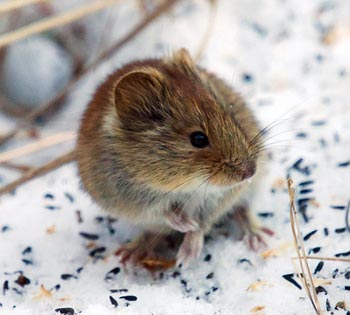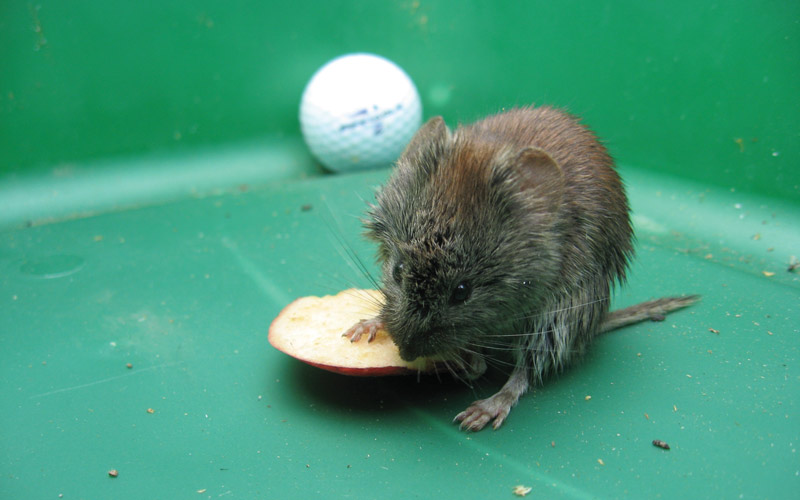Safeguard Your Grass: Efficient Vole Control Techniques
Safeguard Your Grass: Efficient Vole Control Techniques
Blog Article
Vole Bug Control Demystified: A Total Introduction of Infestation Discovery and Effective Therapy Methods
As building owners and yard enthusiasts, the invasion of voles can be a relentless worry that needs an organized approach for efficient monitoring. By comprehending the behavioral patterns of these elusive rats, one can acquire useful insights right into their preferences and practices. From refined signs of problem to the execution of targeted control measures, browsing the world of vole parasite control requires a blend of knowledge and tactical activity. In this thorough introduction, we will certainly check out the subtleties of vole infestation detection and delve into the world of efficient treatment techniques that can protect your spaces from these below ground problems.
Understanding Vole Habits Patterns
Recognizing the detailed actions patterns of voles is essential for effectively carrying out insect control procedures in property and agricultural settings. Voles, tiny rodents that look like mice however with stouter bodies, are infamous for their rapid reproduction prices and voracious appetites for plants. By delving into their actions patterns, parasite control specialists can obtain useful insights into vole susceptabilities, choices, and practices.
Voles are mostly herbivores, feeding upon a variety of plants, bulbs, origins, and bulbs. They are also respected tunnelers, producing fancy underground burrow systems for nesting and foraging. By understanding these routines, bug control specialists can strategically put catches and lure stations along vole paths and access factors, raising the likelihood of effective removal.
Moreover, knowledge of vole behavior patterns can aid in developing preventive measures to discourage future invasions. By resolving factors that draw in voles, such as dense vegetation cover and conveniently accessible food resources, homeowner can make their premises much less inviting to these damaging pests - vole control utah. To conclude, a comprehensive understanding of vole habits is vital in developing efficient and sustainable pest control techniques
Identifying Indications of Vole Infestation
Effective vole parasite control starts with without delay identifying the obvious signs of vole infestation on residential properties. One of one of the most common indications of vole visibility is the visibility of surface area paths. These runways are narrow paths with grass or plant life that voles produce as they travel in between their burrows and food sources. Furthermore, vole droppings are another clear indication of infestation. Vole droppings are little, round pellets that are commonly found along their paths or near their burrows.
In enhancement to droppings and runways, munch marks on tree bark and plant life are additionally indicators of vole task. Voles have a behavior of gnawing on the bases of bushes and trees, which can create damage and potentially kill the plants. In addition, the existence of burrow openings in the ground suggests an active vole populace. Vole burrow entries are typically small and found in verdant or mulched areas.
Being alert for these indicators can aid homeowner spot vole invasions early and take ideal parasite control measures to prevent additional damage.
Executing Targeted Control Measures
What specific approaches can be employed to properly execute targeted control procedures for vole bug administration on properties? Executing targeted control procedures for vole parasite administration needs a multi-faceted technique that integrates both prevention and elimination methods.
Trapping is an additional efficient approach for regulating vole populations. Live catches can be strategically positioned along vole paths or delve entries, baited with peanut butter or apple slices. As soon as recorded, voles should be humanely removed to a various area to avoid reinfestation.
Rodenticides can be used as a last hope for serious infestations, yet care should be exercised to avoid harm to non-target pets. It is important to adhere to all security guidelines and regulations when utilizing rodenticides for vole control.
Natural and Environmentally Friendly Remedies
The adoption of eco mindful techniques can play a crucial duty in handling vole populations without causing harm to the environment. Environmentally friendly and natural solutions use a sustainable method to vole pest control, minimizing using hazardous chemicals and promoting biodiversity in the impacted locations.
One reliable all-natural method is making use of killer urine or predator decoys. Killers like owls, foxes, and snakes are the vole's natural enemies. By tactically placing predator urine or decoys around the ravaged locations, voles may be prevented from check clearing up in those places.
Additionally, growing vole-resistant plant life can aid in lowering vole damage. Plants such as daffodils, crown imperials, and Siberian squill are known to be unappealing to voles and can function as natural repellents.
Moreover, developing physical obstacles like cord mesh or crushed rock around at risk plants can prevent voles from accessing them. These barriers can aid safeguard yards and landscapes without presenting any hazard to the environment or other non-target varieties. By including these green and all-natural solutions, vole problems can be taken care of successfully while preserving eco-friendly balance.
Long-Term Avoidance Techniques
To sustainably deal with vole invasions gradually, executing top article proactive procedures is critical for lasting prevention strategies. One reliable official statement method for long-lasting avoidance is habitat modification. vole pest control. By reducing thick plant life, mulch, and mess around buildings, you can make your residential or commercial property much less enticing to voles. In addition, mounting barriers like fencings or underground cable mesh can assist hinder voles from attacking your garden or lawn.
Routine surveillance of vole activity is vital for very early discovery of any kind of signs of invasion. Setting up vole traps can assist in regulating their population prior to it ends up being a full-blown invasion. It is also vital to seal off any entry points to buildings or frameworks to protect against voles from accessing.

Final Thought
To conclude, comprehending vole habits patterns, determining signs of infestation, executing targeted control measures, utilizing natural and green remedies, and carrying out long-term avoidance methods are essential steps in successfully handling vole invasions. By being aggressive and taking the essential actions to resolve vole issues quickly, people can efficiently avoid and manage vole invasions in their properties.

Report this page